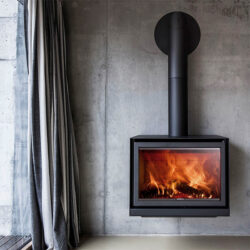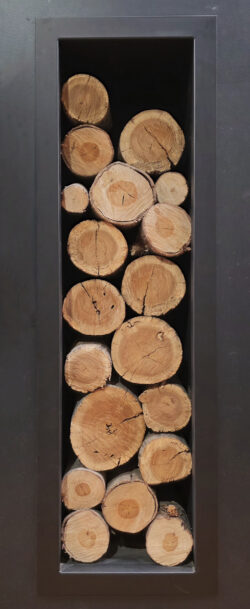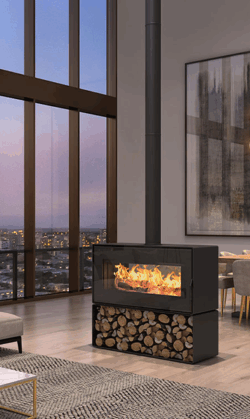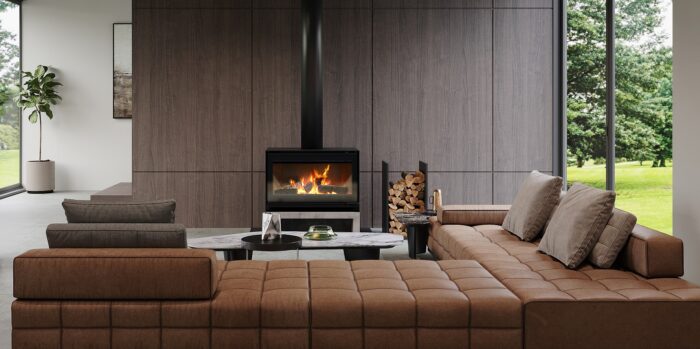With winter settling in, now’s the perfect time to talk firewood.
Whether you’ve got a new wood fireplace or one that’s been part of the home for years, the wood you burn makes all the difference, not just in heat output, but in how efficiently and cleanly your fireplace runs.
 Why wood quality matters more than ever
Why wood quality matters more than ever
Thanks to updated Australian standards, today’s wood heaters are designed to burn cleaner and more efficiently. But they’re also more particular about the fuel they’re given.
Burning the wrong kind of wood, or wood that isn’t properly seasoned, can affect performance and increase emissions. So, what exactly should you be looking for?
 Age does not equal dryness
Age does not equal dryness
A common assumption is that if a tree has been dead or felled for a long time, the wood must be dry, but that’s not always the case.
Many Australian trees have evolved to survive extreme conditions – like bushfires – and when they eventually fall, their outer layers can seal up, locking moisture inside. So, even after months (or years), that log might still hold more water than you’d think.
The key is splitting and seasoning
To properly dry out firewood, it needs to be split. Exposing the inner core allows sun and wind to naturally remove moisture over time.
Once split, firewood should be stored in a dry, well-ventilated area for at least 12 months to reach an ideal moisture level.

 How to know when it’s ready to burn
How to know when it’s ready to burn
The most reliable way to check if your wood is dry enough is by using a moisture meter. Here’s how:
- Start by splitting a piece of wood to reveal the fresh inner core.
- Insert the meter’s probes into that exposed centre.
- Look for a reading of %15.
Testing the outside of the log won’t give you an accurate result, as it dries faster than the interior.
What if the wood’s too wet?
Wood that hasn’t been seasoned properly won’t burn efficiently. If you try to burn firewood with moisture above 20%, here’s what can happen:
- The fire uses energy to evaporate moisture instead of producing heat.
- Can produce excess smoke.
- Residue called creosote can build up in your flue and on your glass, leading to maintenance issues down the track.
What not to burn
- Avoid treated pine, painted wood, or anything from a building site. These can release toxic fumes and damage your heater.
- Don’t judge firewood by price alone, a higher price doesn’t always mean it’s drier. It often just reflects species, splitting, or delivery.
Storing your firewood
Once you’ve got your firewood, keep it off the ground and covered on top but leave the sides open to encourage airflow. A simple rack or pallet setup under cover is all you need.
Getting your firewood right isn’t just about keeping warm — it’s about getting the most out of your heater, minimising emissions, and keeping things running smoothly all winter long.
Click here to watch the Australian Home Heating Association’s infographic video.
Got questions about heaters or firewood selection? Come by the showroom, we’re always happy to chat.

